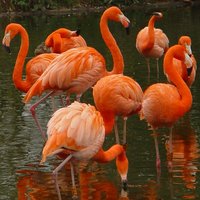A Humble Football and a Public Hydrant...
Between the years 1950 and 1952, I was a living in the neighborhood of single storied terrace houses at the Kim Keat Road area. They were built by the then Singapore Improvement Trust (the forerunner of Housing Development Board), and arranged in clusters with a playing field each. There was no electricity supply, no water supply, no modern sanitation, and no public transportation plying in the neighborhood. Public hydrants were the only source of water supply available to residents. It took about twenty minutes to reach the main road at the junction of Lavender Street and Balestier Road.
The residents comprised a good mix of Chinese and Malays families plus a few Eurasians and Indians. Colloquial Malay and Teochew dialect were the lingua franca of this small enclave. They interacted with one another very well. The guys used to play football together, and swim at the Whampoa river during high tide. The urchins liked to play hide and seek , and a game of piggy ride. The ladies were fond of mingling at the public hydrant area ostensibly to do their laundry.
The spirit of neighborliness was very prevalent. They would share the joy of the festivals together, like Hari Raya Puasa, Chinese New Year, Deepavali and Christmas. The residents had the opportunity to taste the delicacies of various ethnic groups during these occasions.
This small enclave had given way for redevelopment sometime in the mid-1960s when the Housing Development Board embarked on its public housing program to build a new satellite town known as Toa Payoh. It has been replaced with high rise buildings with all the infrastructures which include, among others, schools, community clubs, sports complex, polyclinic, and light industry flatted factories.
The populace in the estate has a good ratio of racial mix. They live in apartments with their doors closed most of the time unlike the days of 1950s when the doors of those cluster houses were opened most of the day. I think it is due to constraint of open space and their hectic schedule that they do not mix so freely.
To make up for the shortcomings, the government began building community clubs for them to interact. Many social activities have been organized to achieve this end, but how successful they have been I am not sure, as I notice that they (the residents) seem to confine to their own kind. For that matter, one morning I saw an all-women aerobic exercise in progress where the participants were all Malays. On other occasions, I saw only Chinese at line dancing sessions.
In view of the foregoing, I cannot help concluding that the two humble objects ( the football and the public hydrant) of the 1950s have played a pivotal role in bridging racial integration which seemingly comes from the hearts.
The residents comprised a good mix of Chinese and Malays families plus a few Eurasians and Indians. Colloquial Malay and Teochew dialect were the lingua franca of this small enclave. They interacted with one another very well. The guys used to play football together, and swim at the Whampoa river during high tide. The urchins liked to play hide and seek , and a game of piggy ride. The ladies were fond of mingling at the public hydrant area ostensibly to do their laundry.
The spirit of neighborliness was very prevalent. They would share the joy of the festivals together, like Hari Raya Puasa, Chinese New Year, Deepavali and Christmas. The residents had the opportunity to taste the delicacies of various ethnic groups during these occasions.
This small enclave had given way for redevelopment sometime in the mid-1960s when the Housing Development Board embarked on its public housing program to build a new satellite town known as Toa Payoh. It has been replaced with high rise buildings with all the infrastructures which include, among others, schools, community clubs, sports complex, polyclinic, and light industry flatted factories.
The populace in the estate has a good ratio of racial mix. They live in apartments with their doors closed most of the time unlike the days of 1950s when the doors of those cluster houses were opened most of the day. I think it is due to constraint of open space and their hectic schedule that they do not mix so freely.
To make up for the shortcomings, the government began building community clubs for them to interact. Many social activities have been organized to achieve this end, but how successful they have been I am not sure, as I notice that they (the residents) seem to confine to their own kind. For that matter, one morning I saw an all-women aerobic exercise in progress where the participants were all Malays. On other occasions, I saw only Chinese at line dancing sessions.
In view of the foregoing, I cannot help concluding that the two humble objects ( the football and the public hydrant) of the 1950s have played a pivotal role in bridging racial integration which seemingly comes from the hearts.

